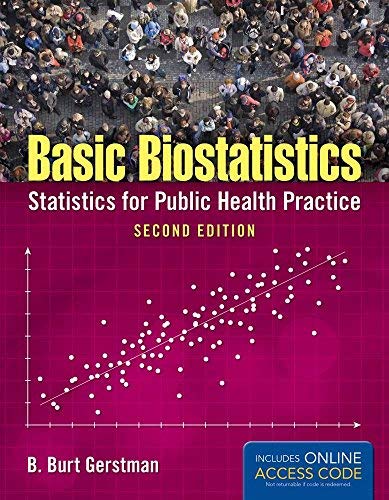Familial history of breast cancer, sample size requirements. Suppose we want to test the hypothesis that women
Question:
Familial history of breast cancer, sample size requirements.
Suppose we want to test the hypothesis that women with a family history of breast cancer are at a higher risk of developing breast cancer than women who do not have this family history. Let us assume that 3% (0.03) of women who do not have a family history of breast cancer will develop the disease in their 60s. We take a simple random sample of women entering their 60s who have a family history of breast cancer.
(a) How large a sample would be needed to detect a different breast cancer risk in our study population if women with a family history of the disease actually had a risk of 5% (0.05) compared to the 3% expected in other women? Let α = 0.05 (two-sided)
while seeking a statistical power of 90% (0.90).
(b) How large a sample would be needed if the true incidence among women with a familial history is actually 6%? Again, let
α = 0.05 (two-sided) and seek 90% power.
(c) Based on your findings in part
(a) and
(b) of this exercise, characterize the relationship between the expected differences under the null and alterative hypotheses and the sample size requirements of the study.
(d) Replicate the conditions expressed in part
(a) of this exercise, except for insisting on an α-level of 0.01 (two-sided) for your test. How many individuals must now be studied?
(e) Characterize the relationship between the required α-level and the sample size requirement.
Step by Step Answer:

Basic Biostatistics Statistics For Public Health Practice
ISBN: 9781284067583
2nd Edition
Authors: B.Burt Gerstman






